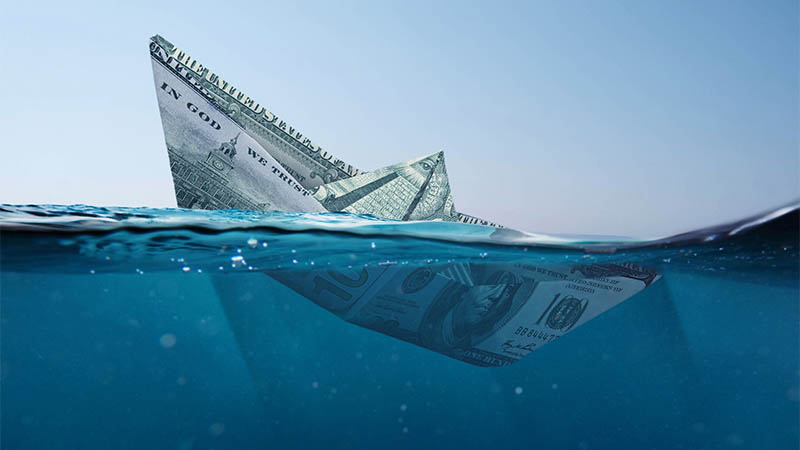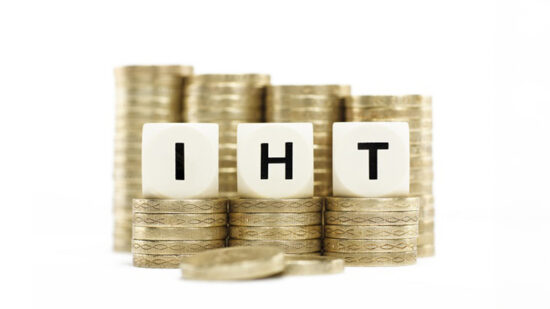For the first time in a generation, the world’s safest asset is being treated as a risky asset, says John Plassard, senior investment specialist at Mirabaud Group.
Yields on US treasury bonds have soared as investors turn their backs on US assets following President Trump’s war on global trade.
The yield on a 10-year treasury bond topped 4.5% last week before falling back slightly, even as equity markets were collapsing. This is a level not seen since the banking shock of 2023, Plassard noted. Moves in longer-dated treasuries have also been significant, said Hal Cook, senior investment analyst at Hargreaves Lansdown. The yield on the 30-year treasury saw a “dramatic” increase, approaching January highs, he said.
Investors are dumping equities, cryptocurrencies and treasury bonds alike, Plassard said. “Investors are selling US treasury bonds. Yes, the very same bonds that are supposed to be the safest on the planet are being dumped, even though the equity markets have recently collapsed.
PA Live: Global equities and Trump volatility: Start of a new cycle?
“Normally, in times of stress, capital flees equities to take refuge in US debt. But this time, we’re actually seeing a brutal sell-off in the bond market. The cause? A muted but systemic fear: what if America was no longer a peaceable financial haven?”
He said investors may need to consider that the backbone of the global financial system could be breaking down, and they will need to navigate a new era in which no assets are ‘risk free’.
Three reasons investors are ditching treasuries
Plassard said there are three main reasons investors are turning their back on US government bonds. One is that hedge funds are selling en masse to cover their losses – this is the margin-call effect on leveraged positions such as basis trades. Second, overseas investors such as Asian central banks are reducing “as a form of geopolitical retaliation”. “On 10 April, China raised its tariffs to 125% and may well have been quietly selling Treasuries,” he said,
Finally, some investors are simply looking for cash and are rushing to liquidity in an uncertain market environment. “Selling both equities and bonds is rarely a good sign,” he added.
Why is 5% the ‘magic’ number for Treasuries?
Plassard said it is difficult to give an exact figure for when the US 10-year yield becomes ‘dangerous’ for US and global equities.
However, Goldman Sachs and other financial institutions are keeping a close eye on the 5% threshold as a critical point that could have major economic consequences. This level is considered pivotal due to several interconnected factors.
See also: How bond investors can thrive in volatile fixed income markets
A 5% yield on the 10-year US treasury would mean much higher borrowing costs for the government, widening the federal deficit and promoting investors to scrutinise the long-term viability of the debt. Investor confidence would likely take a hit on fears of persistent inflation and fiscal instability. This could trigger a “climate of mistrust” and a “self-perpetuating spiral” which gradually contaminates all asset classes.
The housing sector could end up paralysed as mortgage rates rise above 7.5%, weighing on consumption and confidence. There could also be a big impact on how assets are valued, Plassard added.
“The return of 5% interest is making valuation models obsolete: how can you justify a P/E of 25 on the Nasdaq when you can get a guaranteed 5%?” he asked. “Credit spreads are not adjusting to this new reality, proving that the market is disorientated. And meanwhile, volatility is rising, and with it the risk of a bigger shock than we have seen recently.”
What about gilts?
UK government bonds have followed a similar pattern to US treasuries, but with moves smaller in size, explained Cook, and both longer- and shorter-dated gilts have suffered. The 10-year gilt yield is currently at 4.58%, while the 30-year gilt yield recently hit highs not seen since the 2000s, he said.
Nigel Green, CEO of deVere Group, also noted Japanese government bonds were not immune from the trend of rising yields.
“The turbulence in treasuries is globalising fast,” he said. “Borrowing costs in the UK and Japan also jumped sharply, showing the disruption isn’t confined to American shores. The asset that once served as the anchor for world markets is now sparking instability.”
What should investors do now?
Green suggested that, if the treasuries are no longer a risk-free asset, the dollar too could easily lose its crown as the ultimate safe haven. Investors must recognise the fundamental change that is taking place.
“The myth of the invulnerable US treasury – and, by extension, the unshakeable dollar – is being tested in real time,” he said. “Those who recognise this shift early will have the opportunity not just to protect capital, but to grow it, in a world where safe havens must now be earned, not assumed.”
The usual golden rules of diversification apply even more strongly in the current environments. Plassard said that energy sovereignty, local infrastructure and alternative currencies are becoming the new safe havens. He also suggested reducing exposure to market segments that are ultra-linked to globalisation – such as tech, luxury goods, and semiconductors.
For bondholders, Cook suggested those who own gilts and plan to keep hold of them to maturity should not be concerned. If you don’t need to sell, you won’t crystallise any gain or loss. If you hold bond funds, you can expect to see some volatility in the value of your investments, but this will still be far lower than stock markets.
“For most investors, the best course of action will be to sit tight,” he said. “While the volatility is uncomfortable…bonds are still fulfilling their dual purpose of diversifying portfolios and providing an income.”
Investors should be prepared for more upheaval to come though with Hargreaves Lansdown analysts expecting the volatility we have seen to continue in the short term.








